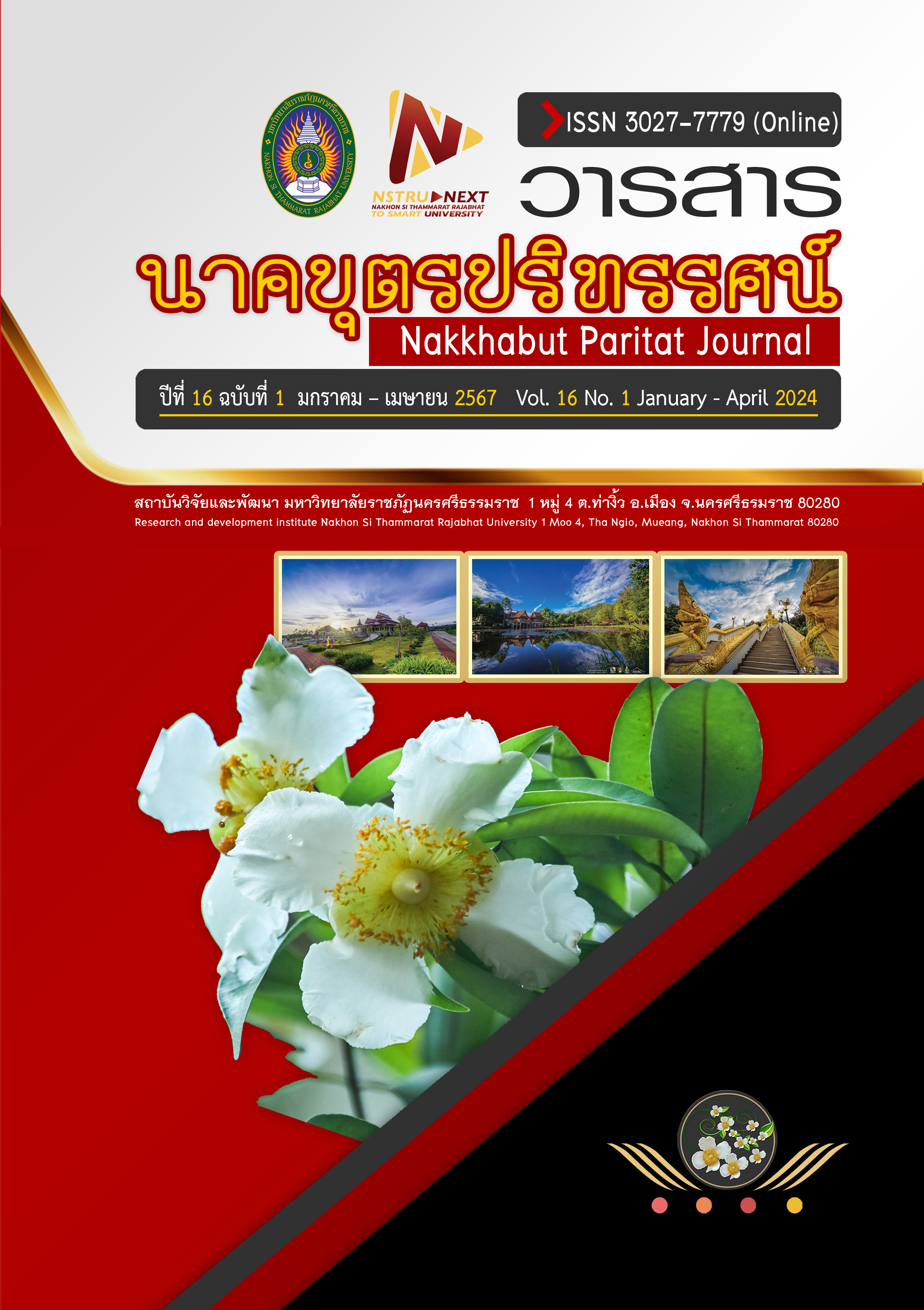Community Network for Managing and Using the Ban Don Bay Area
Main Article Content
Abstract
This research aims to investigate the law that governs the process and pattern of community participation in managing the Ban Don Bay area and study guidelines for managing the area by various organizations including community enterprise groups, local communities, and traditional communities to ensure the communities have a robust mechanism to drive development and contribute to the management of the Ban Don Bay area. The research method used for this study is Qualitative Research, involving document research mainly, such as books, articles, laws, and electronic media related to managing the Ban Don Bay area. Additionally, local information was collected from government officials, stakeholders, citizens, and community networks around the Ban Don Bay area via interviews based on research questions. Finally, the data was analyzed to achieve the research objectives.
The results of the research study indicated that the community network around the Ban Don Bay area was determined by both formal and informal laws. The formal laws included regulations for non-governmental organizations according to The Enhancement and Conservation of National Environmental Quality Act, B.E. 2535 (1992), coastal communities according to the Act on the Promotion of Marine and Coastal Resources Management B.E. 2558 (2015), and local fishing community organizations according to the Fisheries Royal Decree B.E. 2558 (2015). These laws mandated the participation of formal community organizations in managing fishing areas, aquaculture, and marine and coastal resources, thereby excluding informal community networks from participation. To ensure that the communities have a strong mechanism for the development and management of the Ban Don Bay area, a group of organizations, community enterprise groups, local communities, and traditional communities issued guidelines for managing the area. These guidelines stipulated that every sector, both public and private agencies, must reduce their power and increase the power of the people in managing marine and coastal natural resources. They must also review problem-solving, management, and law enforcement and allow the community to manage resources in public areas that are not owned by anyone based on social fairness for all parties and considering ecological sustainability. The author of the study suggests that the Department of Fisheries should register local fishing communities that occur naturally, while the Department of Marine and Coastal Resources should have legal duties to promote and support the participation of coastal communities and local government organizations.
Article Details

This work is licensed under a Creative Commons Attribution-NonCommercial-NoDerivatives 4.0 International License.
References
Chompoopanya, A., & Rojanatraku, T. (2021). The development potential of the community in participant model to sustainable tourism community. Journal of modern learning development, 7(8), 428-439. (in Thai)
Community Enterprise Promotion Act, B.E. 2005. (2005). The government gazette, 122(6), 1-12. (in Thai)
Community Organization Council Act, B.E. 2008. (2008). The government gazette, 125(31), 26-38. (in Thai)
Enhancement and Conservation of National Environmental Quality Act, B.E. 1992. (1992).The government gazette, 109(37), 1-43. (in Thai)
Fisheries Act, B.E. 2015. (2015). The government gazette, 132(34), 1-25. (in Thai)
Intachaiwong, O. (2022). Community rights in balanced and sustainable management of natural resources and environment with balance and sustainable: Study on applicability of elinor ostrom’s theory in Thailand. Ph.D. in Social sciences Journal, 9(1), pp. 182-192.(In Thai).
Marine and Doastal Resources Management Promotion Act, B.E. 2015. (2015). The government gazette, 132(21), 49-60. (In Thai).
Pansavee, p. (2021). Success factors in marine and coastal resource management : Case study, panare fisheries association, panare district, pattanip province. (Master of science, environmental management). National institute of development administration, faculty of environmental development administration. (in Thai)
Songdechtar, C. (2021). The public participation in solid waste management in Mudang district Municipality KhonKaen province.(Master degree of arts department of organizational administration). Krirk University, Faculty of liberal arts. (in Thai)
Sustainable development. (2020). Study report report on area context and socio-economic conditions of coastal communities in Surat Thani province fisheries refugia management for blue swimming crab inv Surat Thani site. Retrieved, 2022, July 15. Form https://inter.fisheries.go.th/eng/en_pic/202102231337311_file.pdf
Tatit, A. (2022). Public partipation in mation resource and environmental management in Wang Sonbun district, Sa Kaeo province. (Master of business administration), Rajamangala University of Technology Thanyaburi, Faculty of business, administration general management. (in Thai)
Tongdachok, K. (2020). Coastal resource management of Ban Don Bay. Retrieved, 2022, July 10. Form https://www.matichon.co.th/columnists/news_2228245 (in Thai)
Royal Ordinance on Fisheries, B.E. 2015. (2015). the government gazette, 132(108), pp. 1-44. (in Thai)
Rungsee, P. & Nooprakob, P (2022). Marine and coastal resources management policy in Thailand. Maejo University, 11(2), 474. (in Thai)
Suanthong, P. & Thinbangtieo, O. (2019). The political ecology of the coastal resources management in Bandon Bay, Surat Thani Province. Burapha Journal of political economy, 7(2), 101-102 (in Thai)
Wildlife Preservation and Protection Act, B.E 2535. (1992). The government gazette, 109(15), 1-22. (in Thai)


